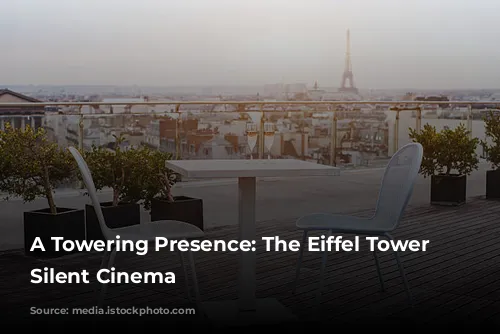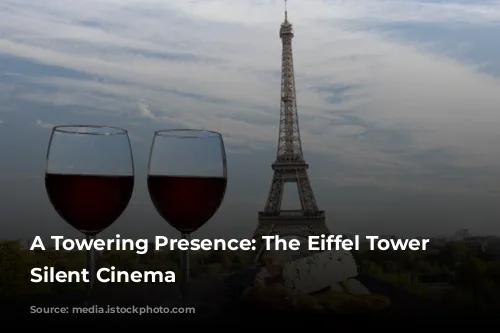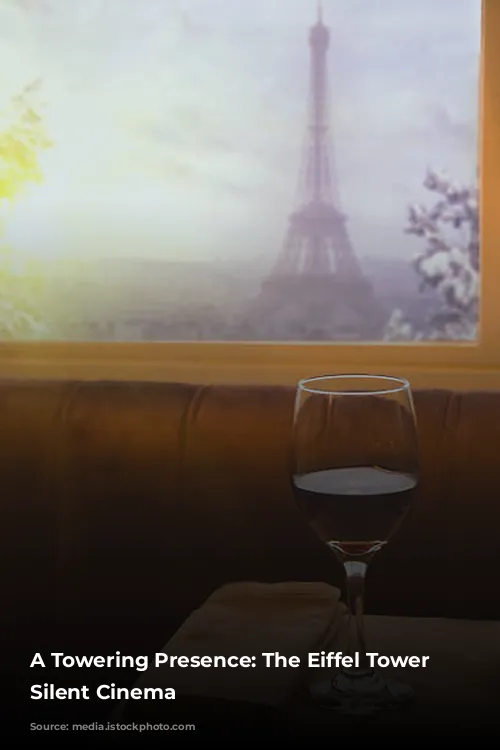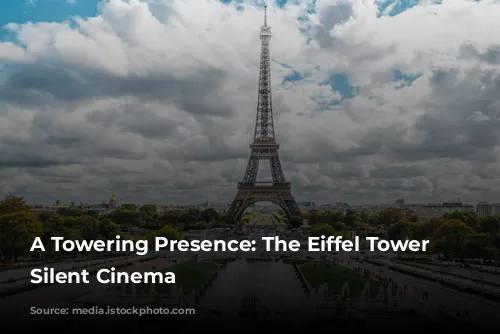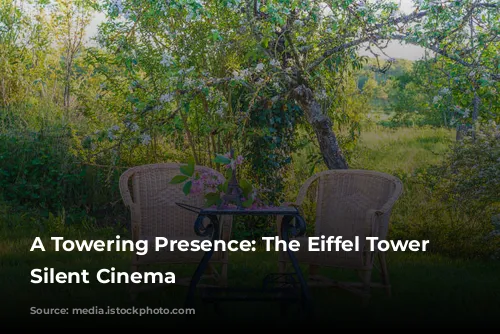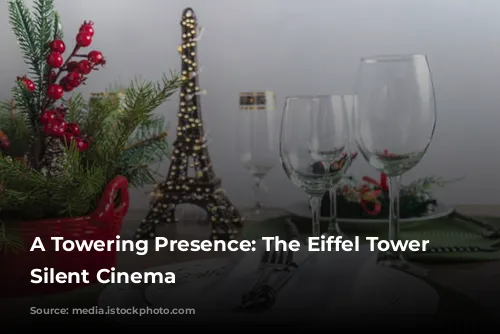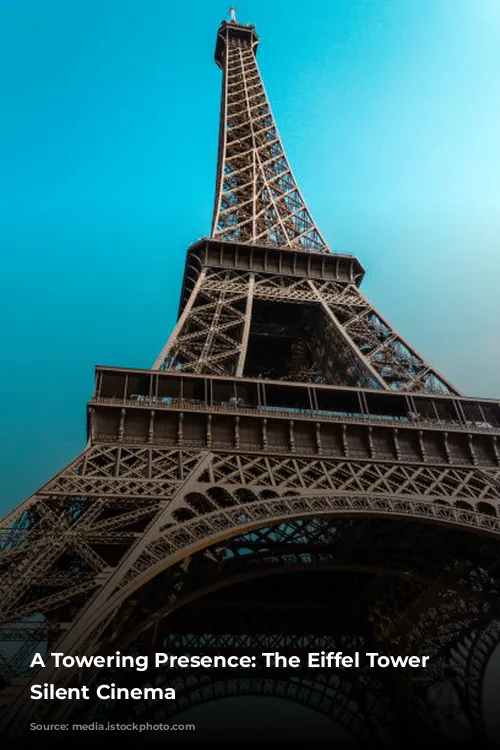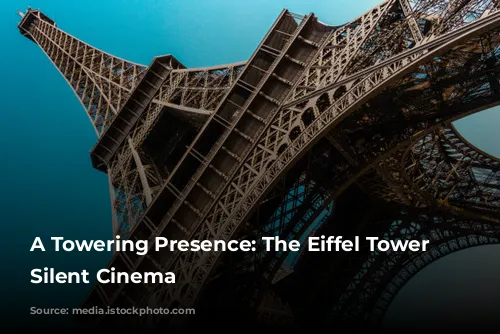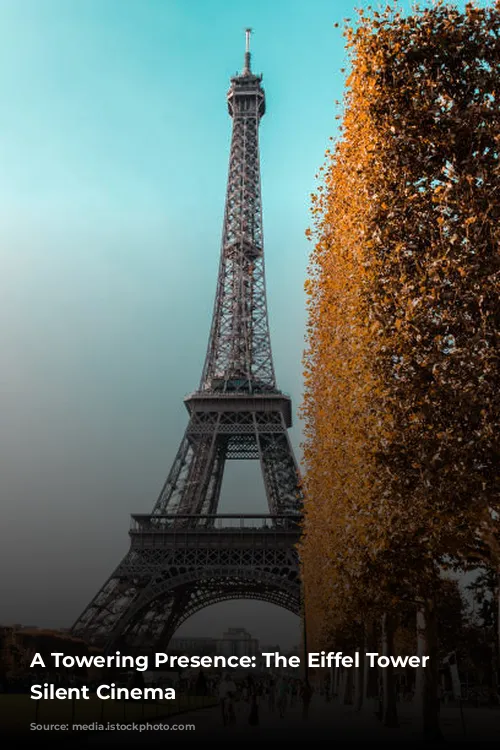The Eiffel Tower, a symbol of Parisian ingenuity and a marvel of engineering, has captivated imaginations for over a century. This iconic structure has inspired countless artists, writers, and filmmakers, but its presence in the early days of cinema, the silent era, has often been overlooked.
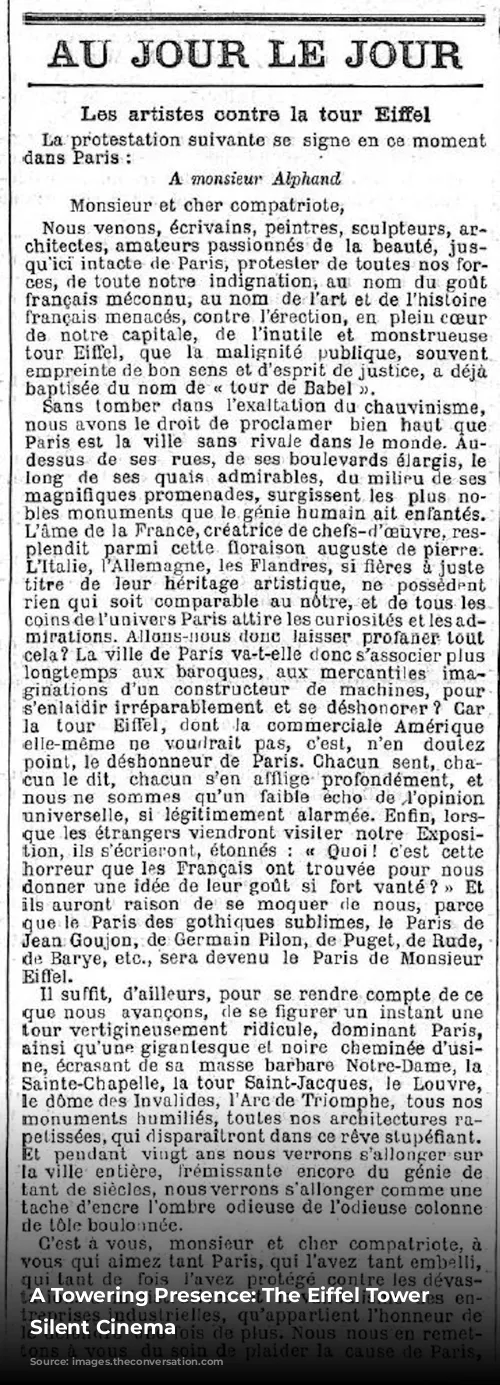
A Towering Symbol in the Birth of Cinema
When the cinematograph emerged in 1895, just six years after the Eiffel Tower’s completion, filmmakers were immediately drawn to its towering presence. The tower’s significance is evident in the archives of the time, with numerous films featuring the landmark. Sadly, many of these early films have been lost due to the fragile nature of the film stock used at the time.
One of the earliest examples of the Eiffel Tower on film was a 42-second panorama captured by the Lumières brothers in 1897. Their innovative use of overlapping foreground and background shots gave viewers a sense of being “embarked” on a journey, adding to the visual impact of the towering structure.
Beyond the Lumières, even the renowned filmmaker Georges Méliès, famous for his fantastical films, included the Eiffel Tower in his work. Méliès’s Parisian films, created between 1896 and 1900, often featured the Champ-de-Mars and the Eiffel Tower, a testament to the tower’s enduring presence in the city’s landscape.
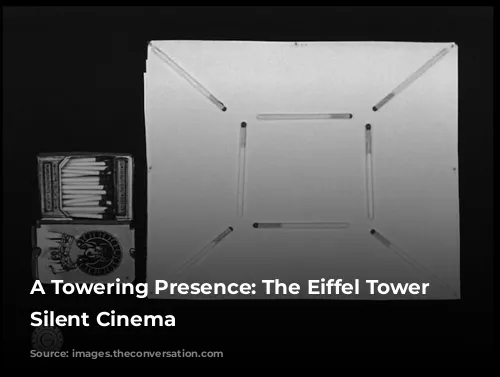
The Eiffel Tower in Fiction and Fact
The Eiffel Tower’s allure extended beyond documentary-style films. It served as a backdrop for comedies, like Georges Hatot’s “The Wig Chase” (1906), where a chase scene unfolded both in front of and inside the tower, showcasing its unique architectural spaces.
Emile Cohl, a pioneer of animation, incorporated the Eiffel Tower into his imaginative film, “The Mysterious Fine Arts” (1910). The tower’s structure was recreated using matches, demonstrating the creative ways in which filmmakers utilized the tower’s form.
The tower’s presence in silent cinema continued to grow in the 1920s, becoming a significant symbol in René Clair’s “The Crazy Ray” (1923). The film’s fantastical premise of a Parisian caretaker finding the city deserted revolved around the Eiffel Tower, highlighting the structure’s impact on the city’s identity.
Clair further explored the tower’s cinematic possibilities in “The Tower” (1928), a cinematic poem offering diverse perspectives on the iconic structure. The tower’s architectural audacity and its presence within the city’s fabric were central to the film’s poetic vision.
Even crime thrillers were not immune to the Eiffel Tower’s allure. Jean Duvivier’s “The Mystery of the Eiffel Tower” (1928) featured the tower as a strategic element for a criminal mastermind, showcasing the tower’s potential for both scientific and criminal intrigue.
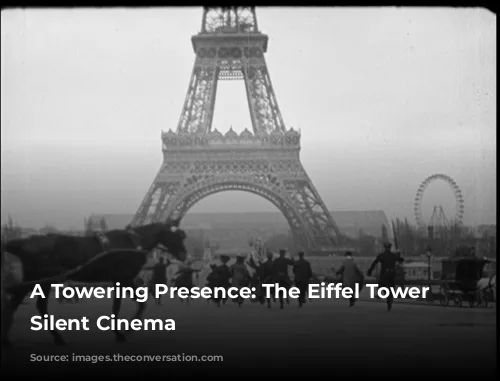
The Eiffel Tower: More Than Just a Monument
The Eiffel Tower’s frequent appearance in silent films speaks volumes about its influence on early filmmaking. Beyond its architectural prowess, the tower represented a symbol of Parisian modernity, technological innovation, and a captivating presence in the city’s landscape.
The tower’s inclusion in documentaries illustrated its significance as a feat of engineering. Its construction and its ongoing impact on the city’s urban fabric were documented in films, providing viewers with a glimpse of the tower’s historical and cultural significance.
The Eiffel Tower’s presence in fiction films, however, emphasized its mysterious allure and its potential for storytelling. The tower’s unique shape, its towering presence, and its strategic location provided filmmakers with a captivating backdrop for narratives ranging from comedy and fantasy to crime and science fiction.
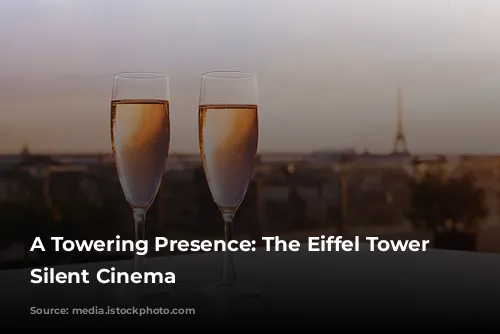
A Forgotten Legacy
While the Eiffel Tower’s presence in silent cinema is vast, its contribution to the history of the medium remains largely unexplored. This oversight can be attributed, in part, to the lack of recognition and appreciation for early cinema itself.
Silent films, often dismissed as a primitive form of entertainment, were a vital part of the development of film as an art form. These early films, short in length and shown in a variety of settings, were a popular form of entertainment, often disparaged by the intellectual elite.
The introduction of a rental system for films in 1907 revolutionized the industry. The shift from selling film copies to renting them led to a more organized distribution system, enabling longer films and the growth of a dedicated cinema industry.
Silent cinema, though lacking dialogue, was a vibrant form of storytelling. Accompanied by live music and featuring a variety of attractions, it was a multisensory experience. Its influence on the development of film as an art form is undeniable, yet its history remains largely untold, including its relationship with the Eiffel Tower.
In conclusion, the Eiffel Tower was more than just a monument in silent cinema; it was a muse, a source of inspiration for storytelling, and a symbol of the city’s dynamism and modernization. Its presence in early films highlights the impact of the tower’s architectural audacity and its captivating presence on the imaginations of artists and audiences alike. The Eiffel Tower’s influence on silent cinema, often overlooked in historical narratives, is a reminder of the rich and multifaceted history of this early and often overlooked art form.
